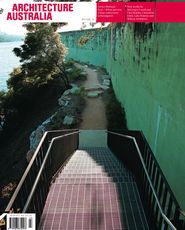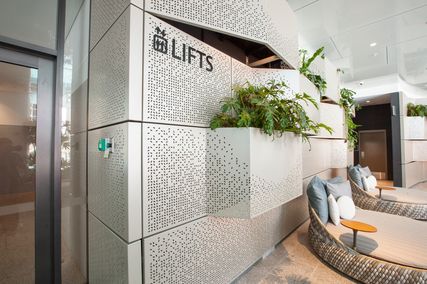A new word has entered the lexicon of certain Sydney architects – “Barangarooted” indicates the frustration felt over the process associated with the development of the East Darling Harbour site, now known as Barangaroo.
As Brian Zulaikha points out in this issue, it is hard to make a considered assessment of the preferred development scheme as so little detailed information has been released to date. However, the process through which the preferred scheme was arrived at has caused consternation in significant sections of the architectural community. Many are also concerned that the development model – handing over an enormous parcel of land to a single developer – dooms the project as a piece of city building from the beginning, no matter the particular developer or the skill of their architectural team. And yet, despite these concerns being articulated privately, the Sydney architectural community has, for the most part, been silent in public. For example, around thirty prominent architects were contacted about commenting on Barangaroo for Stateline before Caroline Pidcock agreed to appear. Apparently, most felt unable to comment due to conflicts of one sort or another. And at the public presentation of the preferred scheme Sydney architects, both on stage and in the audience, were also remarkably quiet. Given the abuse meted out to those who have spoken up, such reticence is not surprising. (Paul Keating described Brian Zulaikha as a “little toady” when, as President of the NSW Chapter, he spoke in defence of architects). However, there is also the sense that no-one wants to lose the chance of future work, or to compromise current projects.
Given this general reluctance to speak publicly, either critically or in favour, I am pleased that nine practitioners did agree to write on Barangaroo for Architecture Australia. Indeed the coverage ballooned beyond my original plan – with many writing well over the commissioned length and one excellent unsolicited contribution turning up, Barangaroo now fills twelve pages of this issue. The result is a range of opinion and analysis, from all sides, which provides further depth to the debate. Of course, there are more positions than we have had room for here, and I hope that others will respond with letters to the editor for coming issues.
Nonetheless, the reluctance of the big names to speak also fascinates and worries me as it points to another serious issue. Lee Stickells comments that many are “perhaps content to circle and await the professional table scraps.” Is this an adequate response? Or does it ultimately undermine the profession further, reducing its authority and its ability to be taken seriously on the things that matter? Of course it is complicated, but is silence the answer?
One of the primary ethical issues in architecture is, at what point does one’s obligation to the public realm and the public good outweigh one’s obligation to a client (or even a potential client)? Will there be a point in Sydney when architects and other built environment professionals at the big end of town find a public voice? Are they working behind closed doors, or simply waiting for those scraps?
Justine Clark, editor Architecture Australia.















